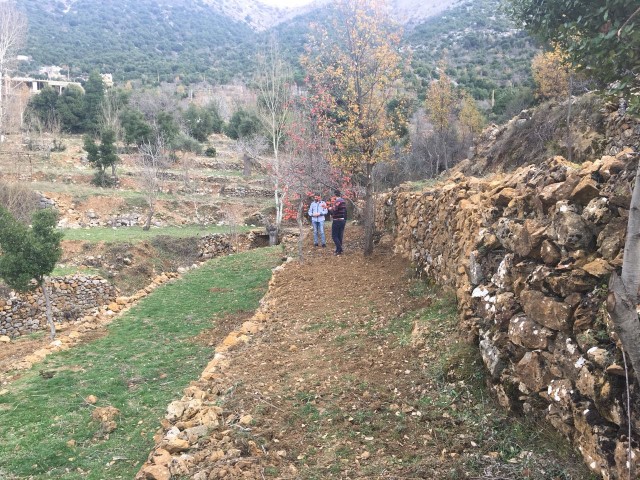

El término "piedra seca" indica cómo se colocan las piedras que constituyen el muro de contención de las terrazas sin utilizar aglutinantes. El muro presenta numerosas ventajas, como la protección contra el viento para algunos tipos de cultivo, al tiempo que preserva el nicho ecológico de las numerosas especies de flora y fauna que colonizan las piedras, los huecos y el suelo de las terrazas. También sirve de paso para los agricultores a lo largo de la franja, interrumpiendo el flujo de escorrentía y favoreciendo la acumulación e infiltración del agua en el suelo. También desempeña un papel importante en la prevención de la erosión del suelo. Las terrazas abandonadas están ampliamente distribuidas en las laderas occidentales del sitio situadas principalmente en altitudes de 1000m a 1200m sobre el nivel del mar. Muchas terrazas están abandonadas con un porcentaje significativo de muros de piedra derrumbados que están colonizados por vegetación natural que forma diferentes etapas sucesionales - desde pequeños matorrales hasta masas forestales secundarias muy densas. También actúan como cortafuegos, reduciendo el riesgo de propagación del fuego y proporcionando acceso y agua para la lucha contra incendios.
La operación comienza con una evaluación sobre el terreno para valorar las necesidades de rehabilitación y recopilar datos. También puede ser útil una evaluación socioeconómica. El primer paso es la restauración de los muros siguiendo los métodos tradicionales. A continuación comienza el proceso de plantación con la gestión del suelo, la selección y colocación de los cultivos, seguido del mantenimiento y cuidado de los cultivos y el suelo. Esto incluye la poda que alimentará el proceso: compostaje, briquetas o carbón vegetal.
Dada la importancia de las terrazas de piedra y el éxito de la restauración de varios sitios, la reserva de biosfera de Shouf está preparando directrices para esta actividad en colaboración con la FAO y el Ministerio de Agricultura.